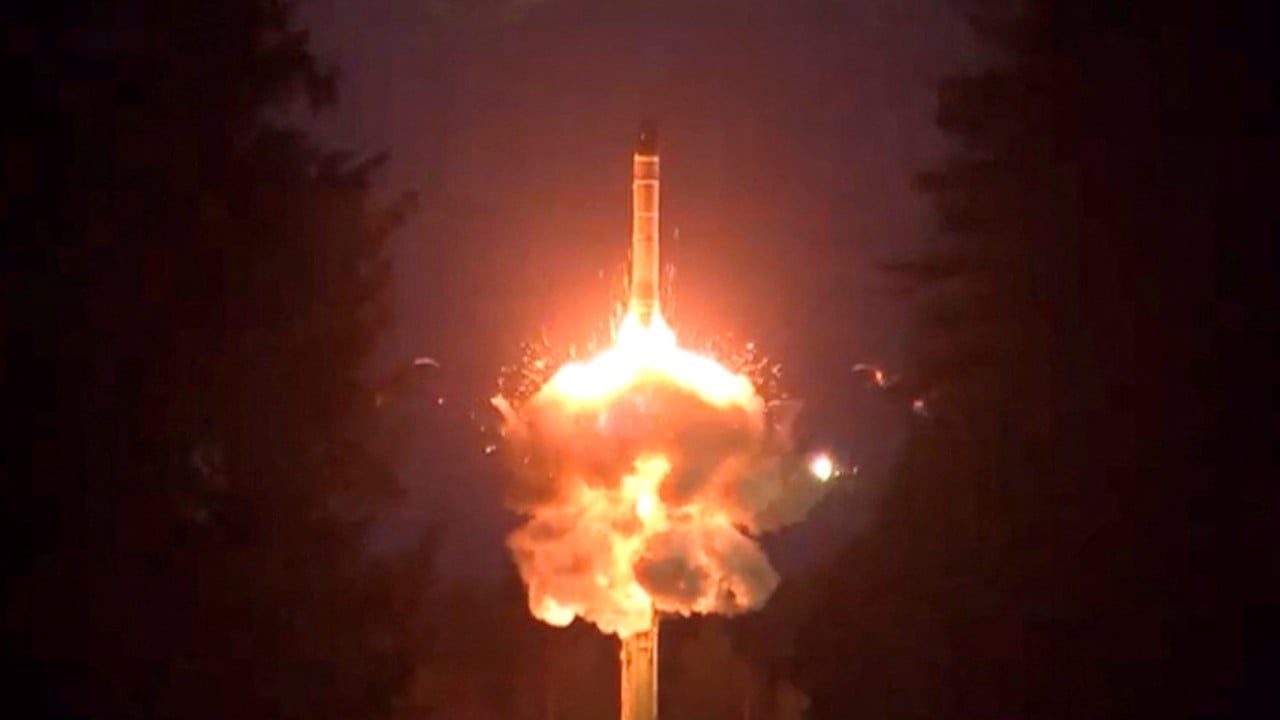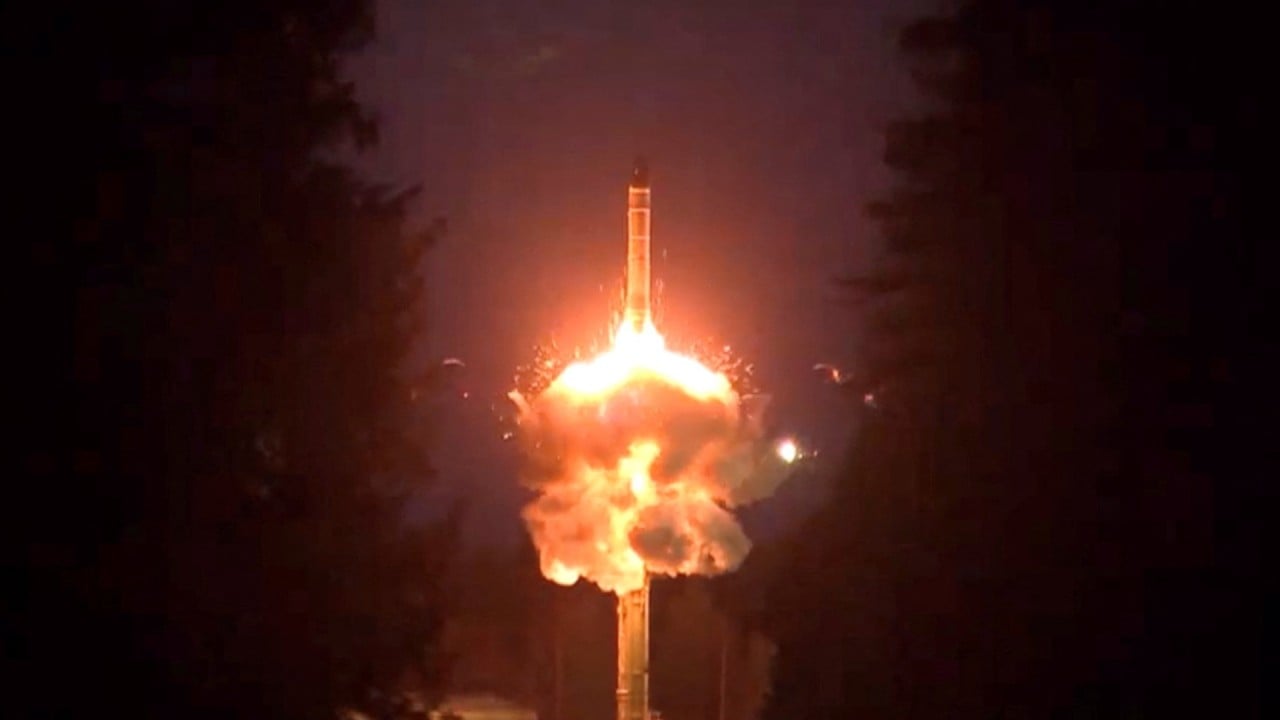China’s third plenum shows it is “not in the mood” to restrain its nuclear weapons capability as it learns from Russia’s deterrence strategy in Ukraine, observers said after a key policy meeting of the ruling Communist Party.
However, they also warned about the risks of a nuclear arms race with the United States as Beijing sought “respect” for its core interests, especially Taiwan.
During the party’s third plenum last week, the Central Committee pledged to “speed up the development of strategic deterrence forces”, according to a detailed document of the committee’s decisions released on Sunday. The expression is generally taken to refer to nuclear prowess.
In order to develop a “new framework of [military] services and arms”, China would accelerate its “strategic deterrence forces, develop new-domain forces with new combat capabilities, while … [strengthening] traditional combat forces”, the document said.
Those are among a range of measures, from socioeconomic to military, to be realised by 2029 – when the People’s Republic celebrates its 80th anniversary.
China has rapidly expanded its nuclear arsenal in recent years. In 2021, President Xi Jinping made his first call to “speed up the creation of a high-quality strategic deterrence and joint combat system”.
This was reiterated in Xi’s work report to the 20th party congress a year later, when he again pledged to “establish a strong system of strategic deterrence”.
“The reuse of this language in the decision document of the recent third plenum shows that China continues to prioritise nuclear and non-nuclear strategic capabilities,” said Zhao Tong, a senior fellow with the Nuclear Policy Programme at the Carnegie Endowment for International Peace.
“The fast improvement of both the quality and quantity of China’s nuclear weapon systems will likely continue in the next few years, including nuclear warheads and their delivery systems such as missiles, launch vehicles, silos, and strategic submarines.”
Zhao said a key aim of China’s nuclear build-up – along with its overall military modernisation – was to “reshape US perceptions of the power balance, compelling Washington to accept a risen China and ‘respect’ its core interests”.
“[Hence] China is not in the mood of restraining its nuclear and other military capabilities,” he said.
The Pentagon estimates that China had more than 500 operational nuclear warheads in 2023, from 400 the previous year.
While China’s stockpile is expanding rapidly – the Pentagon predicts its warhead numbers to exceed 1,000 by 2030 – it still lags far behind the US and Russia.
Russia has the world’s largest arsenal of nuclear weapons. According to the US-based Arms Control Association, Russia has more than 4,300 warheads in stockpile to the US’ more than 3,700, while for deployed warheads, the numbers are over 1,500 and over 1,400, respectively.
Song Zhongping, a former People’s Liberation Army instructor, said it was “crucial” for China to increase the number of nuclear warheads and weapons, since it had “significantly fewer” than the US and Russia, and it also needed to improve the “quality” of its nuclear arsenal to catch up with them.
China would prioritise the development of “a triad of strategic nuclear forces”, Song said, referring to ground-based intercontinental ballistic missiles, submarine-launched missiles, and air-launched weapons.
Hong Kong-based military analyst Liang Guoliang said that, besides warheads and missiles, China would work to build quieter, larger, and more autonomous nuclear strategic submarines, which offer higher speed and better living space for crew.
Beijing would also double down on developing long-range strategic bombers and nuclear-powered aircraft carriers to help boost its “strategic deterrence forces”, Liang said.
“I am not sure whether [China’s] hypersonic missiles can carry nuclear warheads at the moment, but I believe this will be a direction of development,” he said.
Song said the conflict in Ukraine had “demonstrated to the international community that the US refrained from intervening due to fears of Russia’s nuclear arsenal”.
According to Song, the takeaway was that “despite the US’ intention to intervene [in Taiwan], once China possesses potent nuclear weapons capable of striking the continental US in retaliation, it will inevitably restrain itself”.
Beijing sees Taiwan as part of China to be reunited by force if necessary, and has repeatedly held up the issue as a “red line” in its ties with Washington.
The US, like most countries, does not recognise Taiwan as an independent state, but is opposed to any attempt to take the self-governed island by force and is legally bound to supply it with weapons.
Moscow, which invaded Ukraine in February 2022, has repeatedly threatened to use nuclear weapons if Washington and its Nato allies send troops to Ukraine or threaten Russia’s territorial integrity.
Its latest warnings have included tactical nuclear weapon drills near the Ukraine border and in occupied areas, after what it labelled as “provocative” remarks by Western officials.
“The war in Ukraine has significantly impacted the global nuclear order in several ways and has certainly cast a shadow on the progress of nuclear disarmament,” said Amrita Jash, an assistant professor at the Manipal Academy of Higher Education in India.
“The most pressing question has been: if Ukraine had nuclear weapons, would it still have been attacked?” she said.
Lyle Goldstein, the director of Asia Engagement at US think tank Defence Priorities, said while the US-China military rivalry and Beijing’s major nuclear weapons build-up began at least a decade ago, “the Ukraine war and the rather acute tensions surrounding the Taiwan issue at present likely do impact these calculations”.
However, there were “some encouraging signs”, he said, in that many Chinese experts saw the “serious consideration of Russian use of nuclear weapons in this war [as] appalling, risky, and strategically dubious”.
China continues to maintain a “no first use” nuclear weapons policy but according to Goldstein, its approach to strategic deterrence – historically different to the West’s – is gradually shifting.
He identified the change in Beijing’s attitude from a “minimal but efficient second-strike deterrent” to accepting that large, diverse arsenals were “normal” and that the possibility of limited nuclear war could not be ruled out.
To prevent US-China nuclear rivalry or even a nuclear conflict, “the simple answer is that we must all act urgently to reach a near-term compromise solution on the difficult Taiwan issue”.
According to Goldstein, the self-ruled island is the “only issue that could spark a nuclear war between the two superpowers”.
“The only way to avoid that outcome [of nuclear conflict], and the closely related problem of an incredibly expensive and wasteful rivalry … is to embark on a set of specific compromises involving Washington, Taipei and Beijing. This is difficult, but quite achievable.”
Last week, China called off arms control and non-proliferation talks with the US over its latest arms sales to Taiwan. The dialogue had only resumed last year after years of bilateral tensions.
According to Zhao, the move from Beijing “underscores its continued entanglement of arms control and non-proliferation issues with other high-level issues in the bilateral relationship”.



